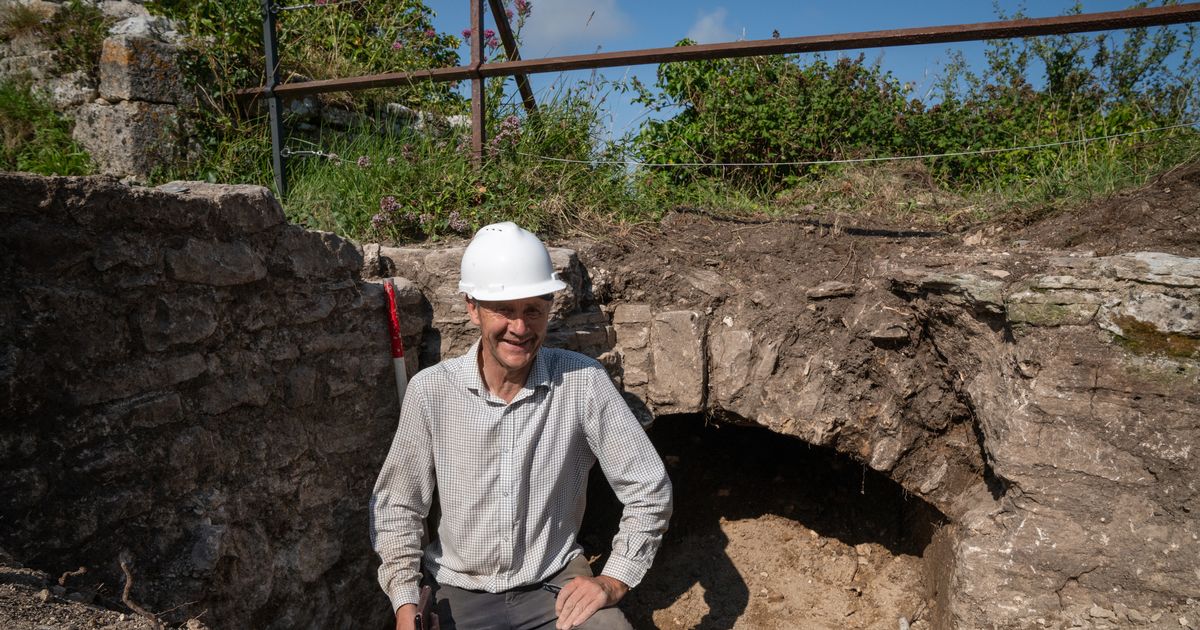From Bronze Age pottery to medieval ruins, every footprint tells a story—yours could be next
13:39, 14 Jun 2025Updated 13:45, 14 Jun 2025
This article contains affiliate links, we will receive a commission on any sales we generate from it. Learn more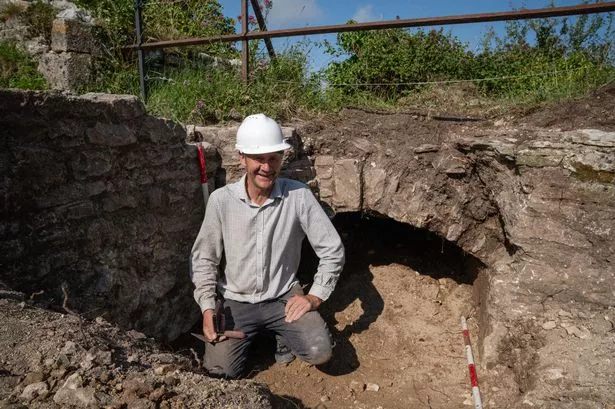 Archaeologists working on a dig to find the gateway in the external wall which was opened by traitors to let Parliamentary forces enter during the Civil War at Corfe Castle, Dorset
Archaeologists working on a dig to find the gateway in the external wall which was opened by traitors to let Parliamentary forces enter during the Civil War at Corfe Castle, Dorset
There’s something deeply compelling about standing where others once stood thousands of years ago—tracing footsteps in soil once trodden by Romans, Saxons or Norman knights. The past, so often confined to textbooks and museum glass, is breaking free this summer in the South West of England. Thanks to the National Trust and the Council for British Archaeology, history is coming alive during the Festival of Archaeology, running from 19 July to 3 August 2025. And whether you’re a curious first-timer or a seasoned enthusiast, there’s a story waiting to be discovered beneath your feet.
The National Trust, custodian of many of Britain’s most treasured landscapes and buildings, is turning its South West sites into open-air classrooms, living museums and hands-on dig sites. From Roman villas to Medieval castles and Georgian manors, this year’s festival promises a packed programme of excavations, expert-led tours, and creative activities that make archaeology not just accessible, but genuinely exciting.
Reconnecting with Roman Britain at Chedworth
Tucked away in the Cotswolds, Chedworth Roman Villa is already one of the most atmospheric Roman sites in the country. But during the Festival of Archaeology, it becomes something even more engaging—a hands-on hub for exploring life in Roman Britain.
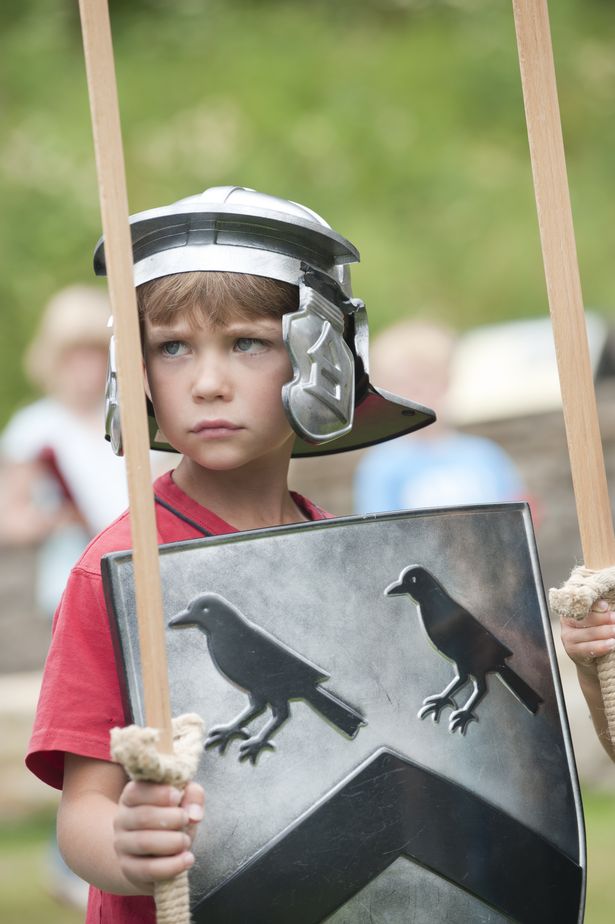 Child dressed as a Centurion at Chedworth Roman Villa, Gloucestershire.
Child dressed as a Centurion at Chedworth Roman Villa, Gloucestershire.
Visitors won’t just observe history—they’ll touch it. “We’re particularly excited to display some of the Roman Empire’s rarest coins and offer behind-the-scenes insights into post-excavation processes,” said James Ball, Chedworth’s Visitor Experiences Manager. Daily events include everything from handling 1,800-year-old mosaic fragments and ancient bones to digging into a replica excavation box—ideal for young would-be archaeologists.
But the real headline act is the Discovery Tours with Dr Martin Papworth, a former National Trust archaeologist whose excavation of Britain’s only known 5th century mosaic made national headlines. Martin’s tours offer rare, first-hand insight into discoveries that are rewriting the end of Roman Britain. “It changed how we understand the longevity of Roman life in Britain,” he says. His storytelling, matched with the tangible evidence around Chedworth, gives visitors the sense they’re part of something truly significant.
Digging Beneath the Surface at Dunster Castle
Perched dramatically above the West Somerset coast, Dunster Castle boasts over a millennium of history. But this summer, it’s what lies beneath the turf that’s grabbing attention. Visitors can witness live geophysical surveys and ground-penetrating radar work as archaeologists search for remnants of the original Medieval castle beneath Green Court.
 Festival of Archaeology at Corfe Castle, Dorset. In collaboration with the Council for British Archaeology.
Festival of Archaeology at Corfe Castle, Dorset. In collaboration with the Council for British Archaeology.
There’s more than just high-tech tools on display, though. Families can get involved through the Heritage Spotter Trail, which challenges young explorers to spot archaeological evidence all over the site—from coat-of-arms to centuries-old mill machinery. And for those who prefer a narrative journey, themed medieval tours dive into the story of the castle’s earliest days, from the Norman conquest to the English Civil War.
The archaeological activity is as much about storytelling as it is science, explains Cat Lodge, National Trust South West Archaeologist: “The Festival is such a great opportunity for everyone, whatever age, to ignite their imagination and get involved in all things archaeology. Through earthworks, buried remains and artefacts, we can connect with past communities and understand the lives they led.”
Devon and Dorset: Where Heritage Hides in Plain Sight
Across Devon, the Festival invites visitors to look at familiar landscapes through an archaeological lens. At Knightshayes, subtle garden features reveal a hidden story of Victorian landscaping, while Greenway—the former home of Agatha Christie—blends literary history with archaeology. Christie, married to archaeologist Max Mallowan, was no stranger to excavation sites herself. Visitors can view their personal finds, dress up as archaeologists, and follow a family-friendly explorer trail through the gardens.
Over at A La Ronde, a peculiar 18th-century sixteen-sided house near Exmouth, the Digging Deeper exhibition sheds light on the property’s evolution, thanks to several archaeological digs—some prompted by Mary Parminter’s 1849 will. Children and adults alike can explore interactive exhibits, examine recent finds, and even encounter the remains of a long-lost shell grotto.
In neighbouring Dorset, Corfe Castle comes alive with a “Time Team” weekend. Alongside guided walks and archaeological demonstrations, visitors can take part in a mock dig or try to distinguish between Roman and Anglo-Saxon, well… poo. It’s a lively blend of entertainment and education that ensures the lessons of the past aren’t just remembered—they’re enjoyed.
Cornwall’s Coastal Time Capsules
For those with a taste for the ancient, Cornwall offers an opportunity to travel even further back. At Gunwalloe, the launch of a new Cliff Castle trail showcases the region’s prehistoric past. The two-mile walk winds through sites tied to the Bronze Age, Iron Age and Medieval periods—each layer a reminder of Cornwall’s long and often rugged history.
Meanwhile, at Antony, visitors can get their hands dirty with Bronze Age pottery. Led by Finds Specialist Laura from Lore and Piece, this session introduces the wonders of Trevisker Ware, a locally crafted pottery with a story to tell about Cornwall’s early settlers.
These are tactile, sensory experiences—the smell of clay, the texture of earth, the salty breeze off the sea—that root participants not just in a place, but in time itself.
 Dr Nick Snashall, National Trust Archaeologist, using GPS, King Barrow Ridge, Stonehenge Landscape, Wiltshire. All land in the National Trust’s Stonehenge Landscape is now under pasture, protecting the Neolithic and Bronze Age monuments and other archaeology.
Dr Nick Snashall, National Trust Archaeologist, using GPS, King Barrow Ridge, Stonehenge Landscape, Wiltshire. All land in the National Trust’s Stonehenge Landscape is now under pasture, protecting the Neolithic and Bronze Age monuments and other archaeology.
Somerset and Beyond: A Region-Wide Story
In Somerset, places like Barrington Court and Montacute House offer more contemplative ways to engage. Visitors are encouraged to pick up trail maps and uncover the hidden archaeological features of these estates—remnants that speak volumes even in their silence. And for those with a keen eye, the gardens reveal as much as the buildings, with subtle earthworks and landscape clues scattered across the grounds.
Over in Gloucestershire, Newark Park’s Tudor hunting lodge is the subject of special guided walks that examine how archaeology has challenged long-held assumptions about the property’s origins.
At Dyrham Park and Prior Park near Bath and Bristol, excavations and walking tours bring more recent histories to light, including landscape design, water engineering and estate development.
From coast to countryside, villa to castle, every site reveals something different—not just about Britain’s past, but about how we choose to understand and preserve it today.
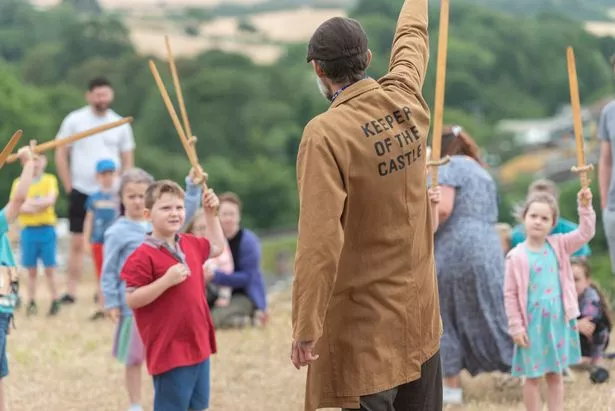 Festival of Archaeology at Corfe Castle, Dorset. In collaboration with the Council for British Archaeology.
Festival of Archaeology at Corfe Castle, Dorset. In collaboration with the Council for British Archaeology.
Why It Matters: The Power of Connection
What stands out across all these events isn’t just the wealth of historical information, but the way in which it’s delivered. There’s no pomp, no dusty lectures. Instead, it’s about connection—to the land, to the stories embedded in stone and soil, and to the people who walked here before us.
As Cat Lodge puts it, “Archaeology helps us tell the stories of the places that we care for, revealing their longer histories of use and people… and helping us to understand more about the lives that they led.” That sense of continuity—between the then and the now—is at the heart of this festival.
The National Trust’s programming ensures that whether you’re fascinated by Roman mosaics, intrigued by Tudor gardens, or simply looking for an activity to entertain the kids this summer, there’s an experience for you.
How to Join the Festival
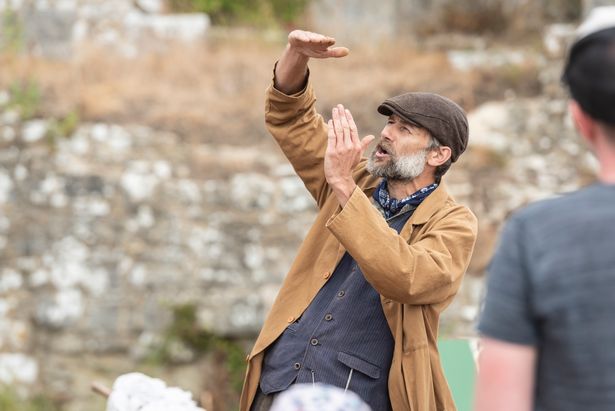 Festival of Archaeology at Corfe Castle, Dorset. In collaboration with the Council for British Archaeology.
Festival of Archaeology at Corfe Castle, Dorset. In collaboration with the Council for British Archaeology.
Most of the events are included with standard National Trust admission, and many are free for members. From hands-on digs to expert talks and family trails, the full schedule spans dozens of locations, each offering a unique window into Britain’s layered history.
To plan your visit or find an event near you, check the National Trust’s website at Festival of Archaeology 2025 | National Trust.
